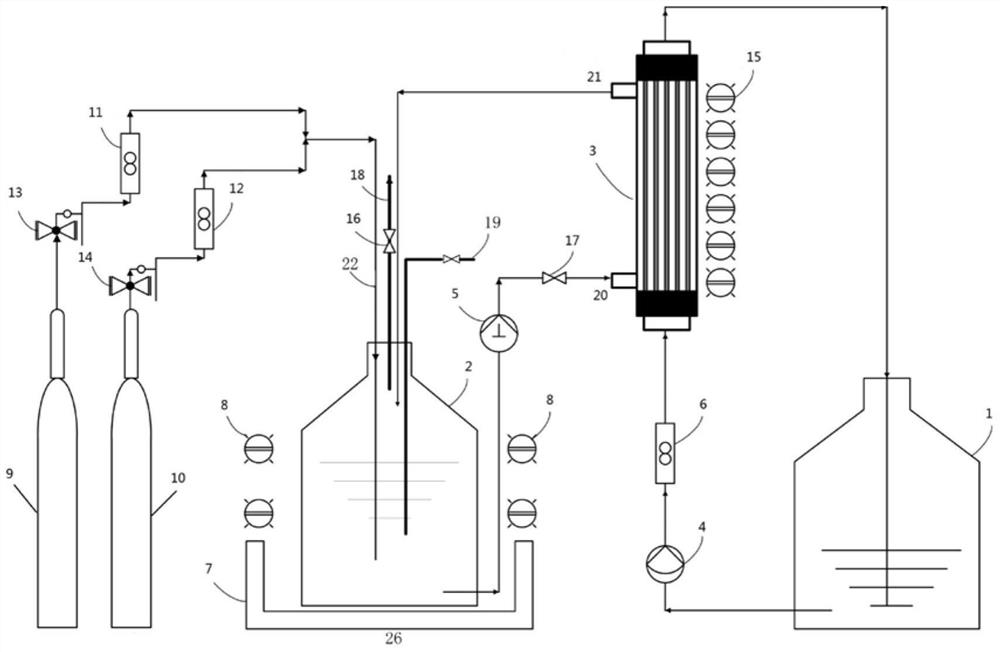A device and method for removing ammonia nitrogen in wastewater
An ammonia nitrogen and waste water technology, applied in microorganism-based methods, chemical instruments and methods, biochemical cleaning devices, etc., can solve the problem of inability to be used repeatedly for a long time, affecting the internal structure of microalgae balls, and decreasing the strength of microalgae balls and other problems to achieve the effect of eliminating potential safety hazards, eliminating potential safety hazards and reducing maintenance costs
- Summary
- Abstract
- Description
- Claims
- Application Information
AI Technical Summary
Problems solved by technology
Method used
Image
Examples
Embodiment example
[0074] 1. Materials
[0075] Microalgae strains and culture conditions: select a single colony of Chlorella vulgaris growing on the surface of the agar petri dish 23, transfer the microalgae colony to a culture solution prepared in advance and sterilized by an autoclave, The broth was placed in a 25 ml flask 24. The culture medium was 3N-BBM+V culture medium, in which 0.2 g / L glucose was added. The formula of 3N-BBM+V culture medium is as follows (the unit of concentration is g / L): NaNO 3 ,0.75;CaCl 2 ·2H 2 O, 0.025; MgSO 4 ·7H 2 O, 0.075; K 2 HPO 4 ·3H 2 O,0.075; KH 2 PO 4 , 0.175; NaCl, 0.025. In addition, the culture solution also contains other trace components, including (the concentration unit is mg / L): Na 2 EDTA, 4.5; FeCl 3 ·6H 2 O,0.582; MnCl 2 ·4H 2 O,0.246; ZnCl 2 , 0.03; CoCl 2 ·6H 2 O, 0.012; Na 2 MoO 4 ·2H 2 O, 0.024; VB 1 ,1.2; VB 12 , 0.01.
[0076] Place the flask containing Chlorella and the culture solution (the culture volume is 20m...
PUM
| Property | Measurement | Unit |
|---|---|---|
| length | aaaaa | aaaaa |
| porosity | aaaaa | aaaaa |
| clearance rate | aaaaa | aaaaa |
Abstract
Description
Claims
Application Information
 Login to View More
Login to View More - Generate Ideas
- Intellectual Property
- Life Sciences
- Materials
- Tech Scout
- Unparalleled Data Quality
- Higher Quality Content
- 60% Fewer Hallucinations
Browse by: Latest US Patents, China's latest patents, Technical Efficacy Thesaurus, Application Domain, Technology Topic, Popular Technical Reports.
© 2025 PatSnap. All rights reserved.Legal|Privacy policy|Modern Slavery Act Transparency Statement|Sitemap|About US| Contact US: help@patsnap.com



